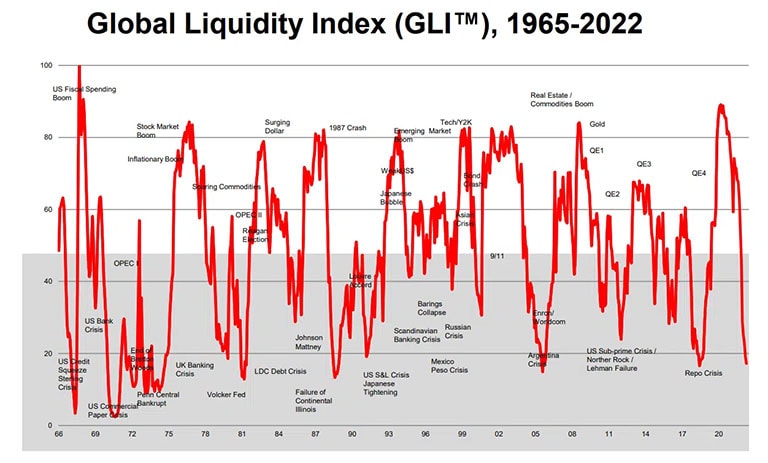financial bubble
How much are you willing to pay for a small bottle of alcohol or a simple mask? Fifty thousand tomans? One hundred thousand tomans? Maybe even a million tomans.
How about buying currency? Or a share of a construction company? Each of these reached astronomical prices at some point in history. Some in our country and some in other countries grew and peaked and finally fell. Economists call this situation a “financial bubble”. But what does it mean?
The term “bubble” in the economic context generally refers to a situation in which the price of something exceeds its fundamental value by a large margin. In this case, speculative demand, brokerage and speculation fuel these inflated prices and the price goes higher and higher.
Labels: Order to build a Forex robot , Build a stock trading robot , Build a trading robot , Trader robot design , Free Forex Robot , Forex robot programming , Forex Expert Making Tutorial , Build a trading robot with Python , Download Forex Trading Robot , Buy Forex Trader Robot , Automated Forex Robot , Free stock trading robot , Learn how to build a Forex trading robot , Alpari trading robot , Forex robot for Android , MetaTrader robot design , MetaTrader robot programming , Forex robot design , Forex robot programming , Automated trading
But in the end, the bubble inevitably bursts! Because mass sales reduce prices.
A financial bubble can occur in the stock market, in the asset market such as real estate, in the credit market with a sudden increase in loans, or even in the commodity market such as alcohol and masks.
The stages of forming a financial bubble
To better understand the financial bubble, it is better to pay attention to the process of its formation. It is interesting to know that although this happened in very different markets, it usually followed the same process.
Economist Hyman P. Minsky was one of the first to explain the development of financial instability and its relationship to the economy. In his pioneering book, Stabilizing an Unsustainable Economy, he identified four stages in a financial bubble.
The steps of forming a bubble are divided into 4 parts:
- concealment
- Consciousness
- mania
- blowing
concealment
Stealth is the stage where “smart money” invests quietly and discreetly. This means that a group of investors who not only have a broad understanding of investment markets, but also often have better access to information invest in a market.
This category sees an opportunity for significant growth in the future. But because their assumptions have not been proven yet, they are at risk. They believe that this investment opportunity will be profitable. But they are not so sure.
Consciousness
Many investors notice the vibrancy that ensues. They import additional money and raise prices, and the gap between nominal and intrinsic prices increases. In the meantime, we may see one or more short-term declines, but the overall trend is growing.
mania
Manic phase is the beginning of a bull market. With more encouragement and increased media coverage, ordinary investors are entering the stock market. Prices rise slowly at first, but as more and more entrants enter the market, they gain momentum, setting the stage for an explosion phase. Everyone realizes that prices are rising.
Expectations about future profits become thoughtless. During this phase, caution is thrown to the wind as asset prices skyrocket. Valuations reach very high levels at this stage. A flood of money comes in, creating more expectations and prices becoming astronomical. The higher the price, the more investments will be made. Without the general public caught up in this new frenzy, the smart money, as well as many institutional investors, are quietly pulling out and selling their holdings.
In this situation, it is very difficult to understand what are the fundamental reasons for this price growth. The number of investors has increased and everyone starts investing because they don’t want to be left behind by the inflation in that market.
Unbiased opinions on fundamentals are becoming increasingly difficult to find as the number of investors becomes epidemic and all are interested in preserving and even increasing the value of their assets. Everyone is trying to get in, and newcomers have absolutely no understanding of the market, its dynamics, or its fundamentals. Prices are driven up by all possible financing, especially leverage and debt.
blowing
It only takes a relatively minor event to burst the bubble. Almost everyone knows when the situation has changed and the bubble is bursting and there is not much they can do. Many try to reassure people that this is only a temporary setback. The fall again makes a deceptive high known as a “bull trap” and begins its fall again and a return to a severe bear market. Many are trying to unload their properties, but there are few buyers.
No one buys the asset because they are waiting for the price to drop further. Prices are collapsing at a much faster rate than the rate that inflated the bubble. However, the general public at this point sees the sector as “the worst possible investment one can make”. This is when the smart money starts snapping up assets at low prices.
- ۰ ۰
- ۰ نظر
 چه زمانی به سقف چرخه بعدی بیت کوین میرسیم؟
چه زمانی به سقف چرخه بعدی بیت کوین میرسیم؟ Tether Claps Back at JPMorgan’s Stablecoin Skepticism
Tether Claps Back at JPMorgan’s Stablecoin Skepticism